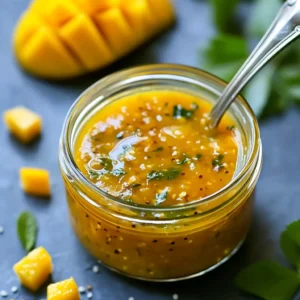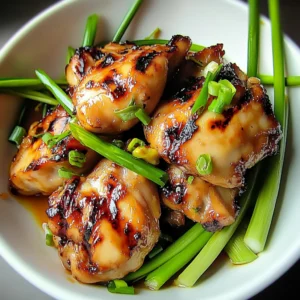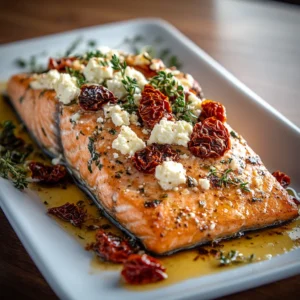Japchae is a delightful Korean dish that combines sweet potato glass noodles with tender beef and fresh vegetables. This versatile recipe is perfect for gatherings, family dinners, or even meal prep. Its chewy noodles paired with a savory-sweet sauce make it a standout choice for any occasion. Whether you enjoy it as a main course or a side dish, Japchae brings comfort and nutrition to your table.
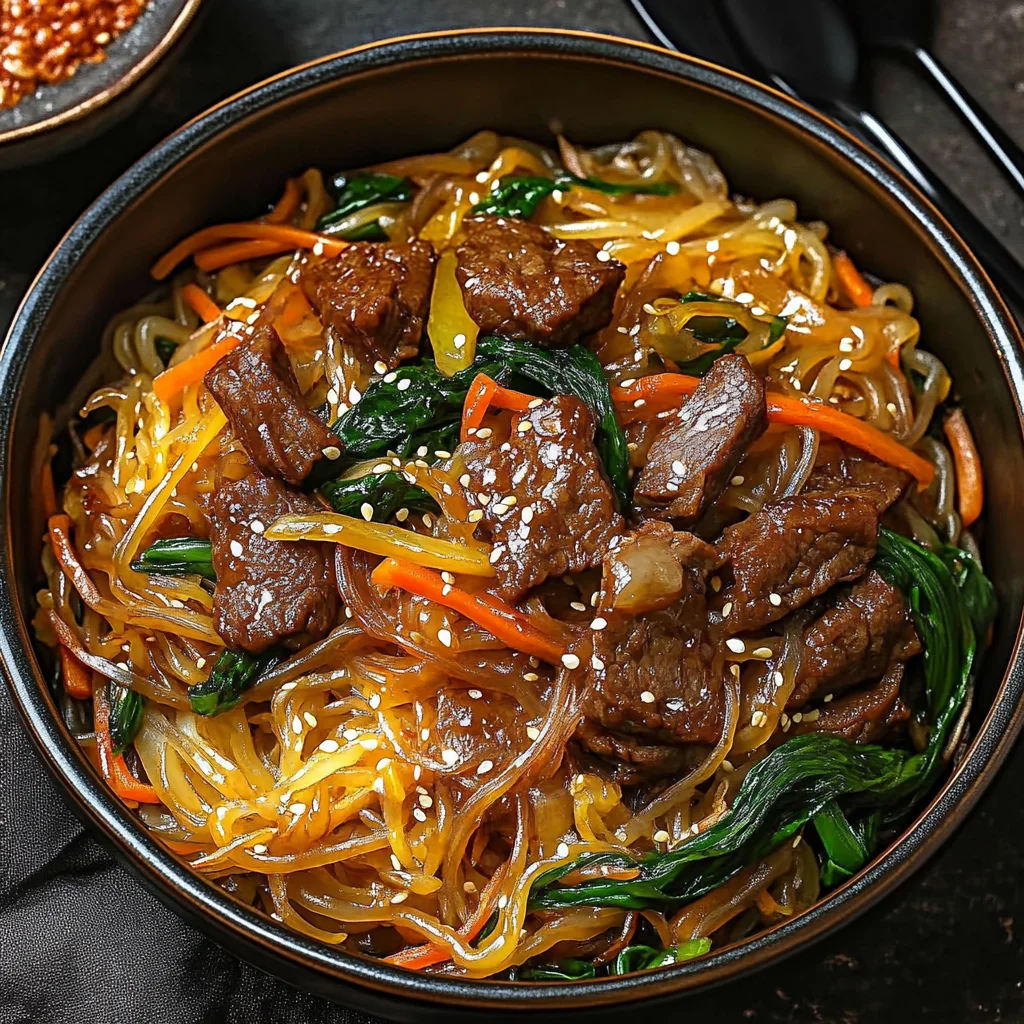
Jump to:
- Why You’ll Love This Recipe
- Tools and Preparation
- Essential Tools and Equipment
- Importance of Each Tool
- Ingredients
- For the Main Dish
- For Garnish
- How to Make Japchae
- Step 1: Cook the Noodles
- Step 2: Cook the Beef
- Step 3: Stir-Fry Vegetables
- Step 4: Combine Ingredients
- Step 5: Serve
- How to Serve Japchae
- As a Main Dish
- With Rice
- In Lettuce Wraps
- With Kimchi
- As Part of a Korean Feast
- Cold Japchae Salad
- How to Perfect Japchae
- Best Side Dishes for Japchae
- Common Mistakes to Avoid
- Storage & Reheating Instructions
- Refrigerator Storage
- Freezing Japchae
- Reheating Japchae
- Frequently Asked Questions
- What is Japchae?
- How do I customize my Japchae?
- Can I make Japchae ahead of time?
- Is Japchae gluten-free?
- Final Thoughts
- 📖 Recipe Card
Why You’ll Love This Recipe
- Easy to Prepare: With simple steps and readily available ingredients, making Japchae is a breeze.
- Flavorful Experience: The combination of soy sauce, sesame oil, and fresh vegetables creates a deliciously balanced dish.
- Versatile Ingredients: Customize your Japchae by swapping proteins like chicken, tofu, or shrimp to suit your taste.
- Nutritious Meal: Packed with vegetables and lean protein, this dish offers both flavor and health benefits.
- Perfect for Any Occasion: Whether it’s a casual dinner or a festive gathering, Japchae impresses everyone.
Tools and Preparation
Before you start cooking, gather the necessary tools to ensure an efficient cooking process.
Essential Tools and Equipment
- Large pot
- Skillet
- Mixing bowl
- Knife
- Cutting board
Importance of Each Tool
- Large pot: Essential for boiling the sweet potato noodles evenly without overcrowding.
- Skillet: Perfect for stir-frying the beef and vegetables at high heat for optimal flavor.
Ingredients
For the Main Dish
- 2 lb thin-sliced beef (or sub with chicken, tofu, or shrimp)
- 1 lb Korean sweet potato noodles (glass noodles)
- 3 medium carrots, julienned
- 1 large white onion, thinly sliced
- 1/2 bunch green onions, chopped
- 6 garlic cloves, minced
- 1/2 lb spinach leaves
- 4 tbsp sesame oil (divided)
- 1 tbsp olive oil
- 6 tbsp soy sauce (or tamari for gluten-free)
- 3 tbsp brown sugar
For Garnish
- 2 tablespoons fresh parsley, finely chopped

How to Make Japchae
Step 1: Cook the Noodles
Bring water to a boil in a large pot with a drizzle of olive oil.
1. Add the sweet potato noodles to the boiling water.
2. Cook for 5-6 minutes until they are tender but still chewy.
3. Drain the noodles and set them aside.
Step 2: Cook the Beef
In a skillet over high heat:
1. Add the thin-sliced beef.
2. Cook until browned while seasoning with half of the soy sauce, sesame oil, and brown sugar.
3. Once cooked through, remove from heat and set aside.
Step 3: Stir-Fry Vegetables
In another skillet:
1. Heat olive oil over medium-high heat.
2. Add julienned carrots and sliced onion; cook until softened.
3. Stir in the remaining soy sauce, sesame oil, and brown sugar.
4. Mix in minced garlic and chopped green onions; cook for another minute.
Step 4: Combine Ingredients
Add spinach leaves to the skillet:
1. Stir until wilted.
2. Combine all veggies with cooked beef in a mixing bowl along with the drained noodles.
Step 5: Serve
Toss all ingredients well in the large bowl until evenly mixed.
Serve warm and garnish with extra green onions if desired.
Enjoy your homemade Japchae!
How to Serve Japchae
Japchae is a versatile dish that can be served in various ways, making it perfect for any occasion. You can enjoy it as a main course or as a delightful side dish at gatherings. Here are some creative serving suggestions to elevate your Japchae experience.
As a Main Dish
- Serve Japchae hot on its own for a filling meal that highlights the wonderful flavors of the noodles and vegetables.
With Rice
- Pair Japchae with steamed rice for a heartier meal. The rice complements the savory sauce beautifully.
In Lettuce Wraps
- Use fresh lettuce leaves to create wraps filled with Japchae. This adds a crunchy texture and makes for a fun, interactive dining experience.
With Kimchi
- Offer kimchi on the side. The spicy fermented flavor of kimchi balances the sweetness of Japchae perfectly.
As Part of a Korean Feast
- Incorporate Japchae into a larger Korean meal, alongside dishes like bulgogi and mandu for an authentic feast experience.
Cold Japchae Salad
- Chill leftover Japchae and serve it cold as a salad. This refreshing twist is especially enjoyable during warmer months.
How to Perfect Japchae
To make the best Japchae, focus on these key techniques that enhance flavor and texture. Follow these tips for a memorable dish every time.
- Use fresh ingredients: Fresh vegetables add vibrant color and crunch, elevating the overall taste of your Japchae.
- Don’t overcook the noodles: Ensure you cook sweet potato noodles just until tender. They should remain chewy to provide that signature texture.
- Balance flavors: Adjust soy sauce and brown sugar according to your taste preferences. A well-balanced flavor profile makes all the difference.
- Add protein options: Feel free to substitute beef with chicken, tofu, or shrimp for variation and nutrition.
- Garnish wisely: Use freshly chopped green onions or sesame seeds as garnishes to add an appealing finish and extra flavor.
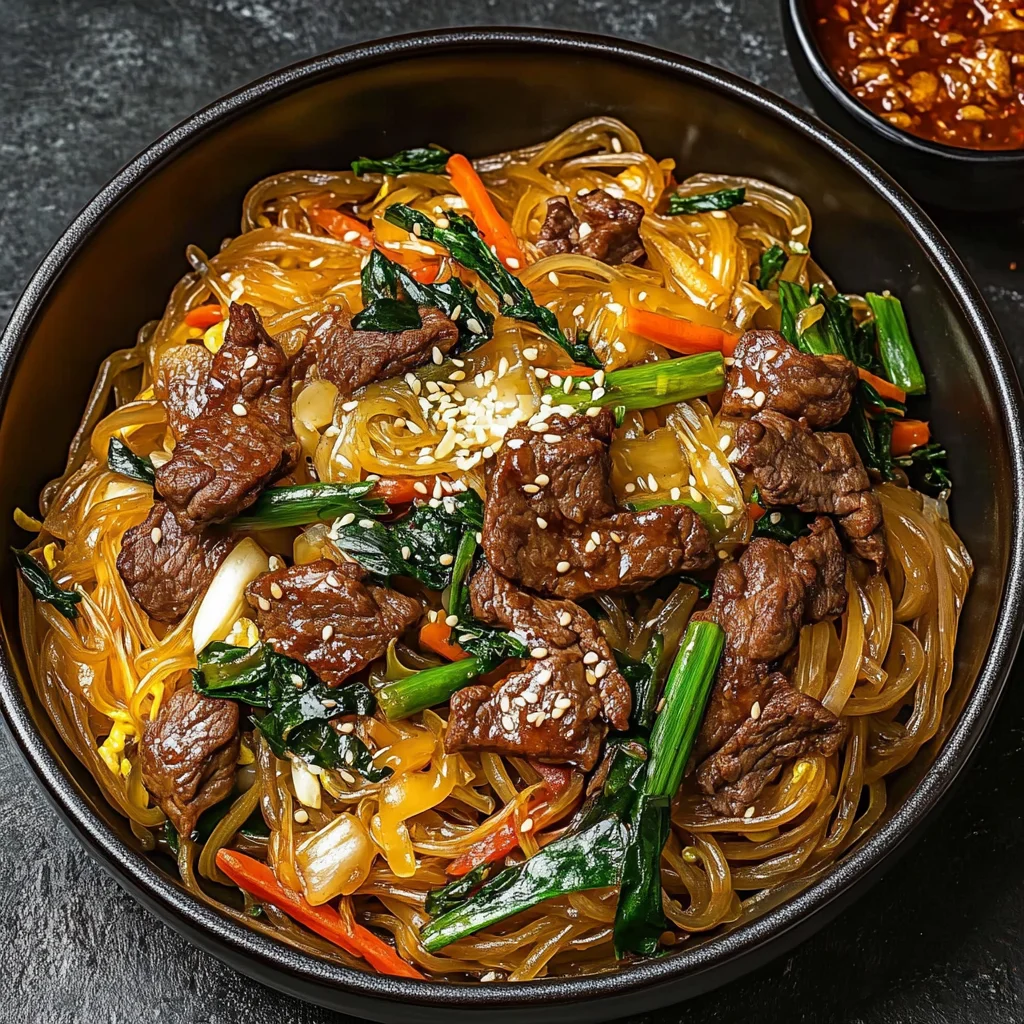
Best Side Dishes for Japchae
When serving Japchae, consider complementing it with delicious side dishes that enhance your meal experience. Here are some excellent options:
- Kimchi: A traditional Korean side dish made from fermented vegetables, offering spice and tanginess.
- Korean Pickled Radish (Danmuji): Sweet and tangy yellow pickled radish that adds crunch and flavor contrast.
- Spicy Cucumber Salad: Refreshing cucumbers tossed in a spicy dressing, providing a cool balance to the warmth of Japchae.
- Steamed Vegetables: Lightly steamed broccoli or bok choy adds color and nutrients without overshadowing the main dish.
- Egg Roll (Gyeran Mari): A rolled omelet sliced into bite-sized pieces, bringing richness and softness to your plate.
- Rice Cakes (Tteok): Chewy rice cakes in savory sauces can be served alongside for added texture and heartiness.
- Seaweed Salad: A light seaweed salad offers umami flavors that perfectly match the sweetness of Japchae.
- Bulgogi: Marinated grilled beef that pairs wonderfully with the flavors of sweet potato noodles.
Common Mistakes to Avoid
Making Japchae can be simple, but there are common pitfalls that can affect the final dish. Here are some mistakes to avoid for the best results.
- Skipping the soaking step: Not soaking the sweet potato noodles can lead to a chewy texture that is less enjoyable. Make sure to soak them according to package instructions before cooking.
- Overcooking the vegetables: Cooking vegetables for too long can result in mushiness. Aim for a tender-crisp texture by cooking them just until they are vibrant and slightly soft.
- Not seasoning properly: Failing to season each component can leave your Japchae bland. Be sure to season the beef and vegetables at every stage with soy sauce and sesame oil.
- Using too much oil: Adding excessive oil can make Japchae greasy rather than flavorful. Stick to the recommended amounts for a balanced taste and texture.
- Neglecting garnishes: Skipping the green onions or sesame seeds can make your dish look less appealing. A sprinkle of fresh ingredients adds color and enhances flavor.
Storage & Reheating Instructions
Refrigerator Storage
- Store leftover Japchae in an airtight container.
- Keep it in the fridge for up to 3 days for optimal freshness.
Freezing Japchae
- Place cooled Japchae in freezer-safe containers or bags.
- Freeze for up to 2 months; label with the date for reference.
Reheating Japchae
- Oven: Preheat your oven to 350°F (175°C). Spread Japchae on a baking sheet and cover with foil. Bake for about 15-20 minutes until heated through.
- Microwave: Place a serving of Japchae in a microwave-safe dish. Cover loosely and heat on high for 1-2 minutes, stirring halfway through.
- Stovetop: Heat a non-stick skillet over medium heat. Add a splash of water or oil, then add Japchae. Stir until warmed through, about 5 minutes.
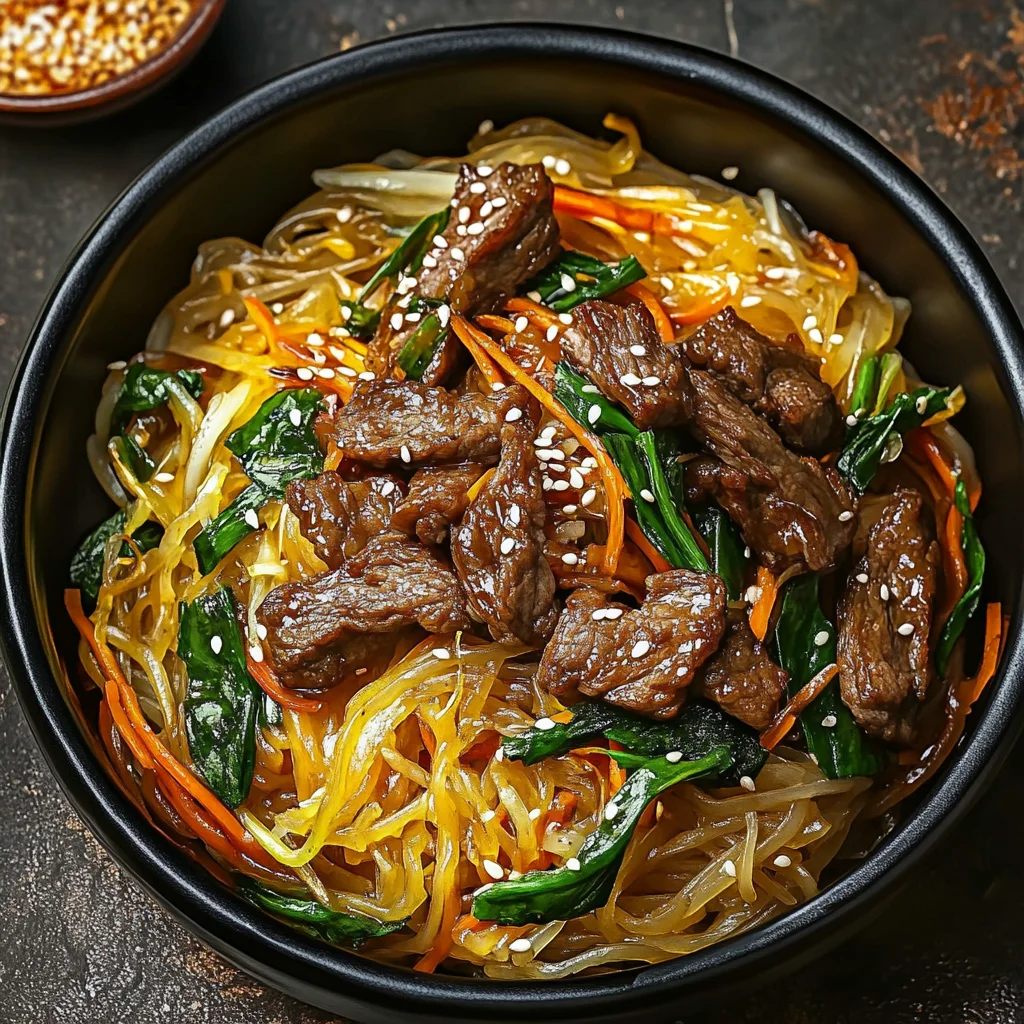
Frequently Asked Questions
What is Japchae?
Japchae is a Korean noodle dish made from sweet potato glass noodles stir-fried with vegetables, meat, and seasoned with soy sauce and sesame oil.
How do I customize my Japchae?
You can customize Japchae by adding different proteins like chicken, tofu, or shrimp. Additionally, you can spice it up with gochujang or include other vegetables of your choice.
Can I make Japchae ahead of time?
Yes! You can prepare Japchae ahead of time. Store it in the refrigerator for up to three days or freeze it for longer storage.
Is Japchae gluten-free?
If you use tamari instead of regular soy sauce, yes! The sweet potato noodles themselves are naturally gluten-free, making this dish suitable for those with gluten sensitivities.
Final Thoughts
Japchae is not just delicious; it’s also incredibly versatile. With its blend of flavors and textures, this dish can easily adapt to suit your preferences—whether you want it vegetarian-friendly or packed with protein. I encourage you to try making this recipe at home and enjoy customizing it with your favorite ingredients!
Did You Enjoy Making This Recipe? Please rate this recipe with ⭐⭐⭐⭐⭐ or leave a comment.
📖 Recipe Card
Print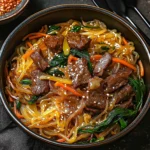
Japchae
- Total Time: 45 minutes
- Yield: Serves approximately 6
Description
Japchae, a traditional Korean dish, features sweet potato glass noodles stir-fried with tender beef and an array of vibrant vegetables. Its delightful chewy texture, combined with a savory-sweet sauce, makes Japchae a beloved choice for any gathering or family dinner. Easy to prepare and versatile, you can customize it with different proteins like chicken, tofu, or shrimp. Whether served as a main course or a side dish, this nutritious meal is sure to impress your guests and bring comfort to your table.
Ingredients
- 2 lb thin-sliced beef (or chicken, tofu, or shrimp)
- 1 lb Korean sweet potato noodles (glass noodles)
- 3 medium carrots, julienned
- 1 large white onion, thinly sliced
- ½ bunch green onions, chopped
- 6 garlic cloves, minced
- ½ lb spinach leaves
- 4 tbsp sesame oil
- 6 tbsp soy sauce
Instructions
- Cook the sweet potato noodles in boiling water with olive oil for 5-6 minutes until tender but chewy. Drain and set aside.
- In a skillet over high heat, cook the thin-sliced beef with half of the soy sauce and sesame oil until browned. Remove from heat.
- Stir-fry carrots and onions in another skillet with olive oil until softened. Add remaining soy sauce, sesame oil, garlic, and green onions; cook for another minute.
- Stir in spinach until wilted, then combine beef and veggies in a mixing bowl with the drained noodles; toss well.
- Serve warm and garnish with green onions if desired.
- Prep Time: 20 minutes
- Cook Time: 25 minutes
- Category: Main
- Method: Stir-frying
- Cuisine: Korean
Nutrition
- Serving Size: 1 serving
- Calories: 380
- Sugar: 7g
- Sodium: 800mg
- Fat: 12g
- Saturated Fat: 2g
- Unsaturated Fat: 8g
- Trans Fat: 0g
- Carbohydrates: 50g
- Fiber: 4g
- Protein: 24g
- Cholesterol: 70mg


